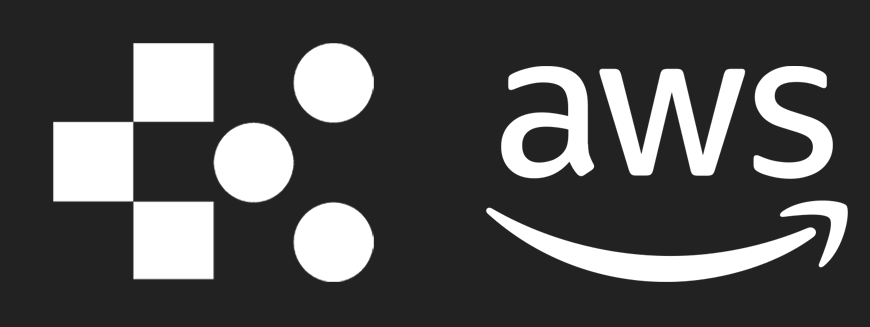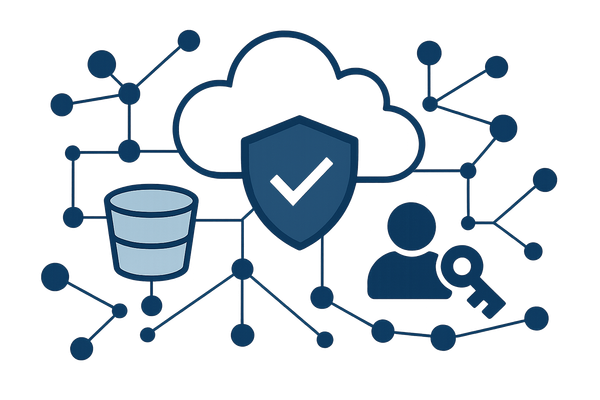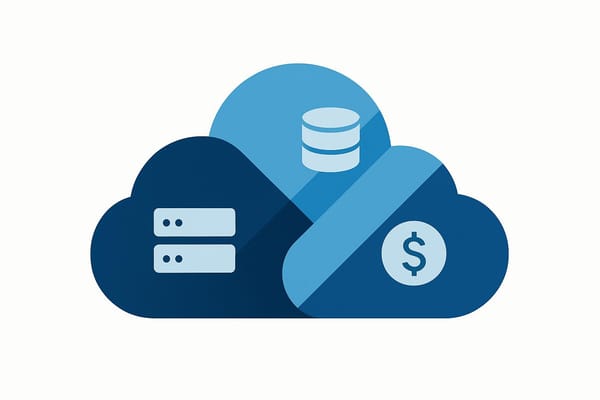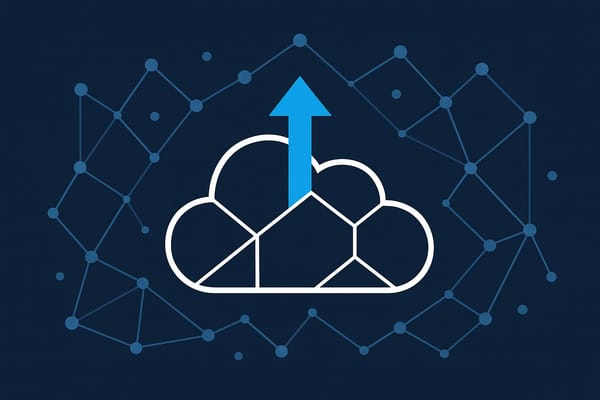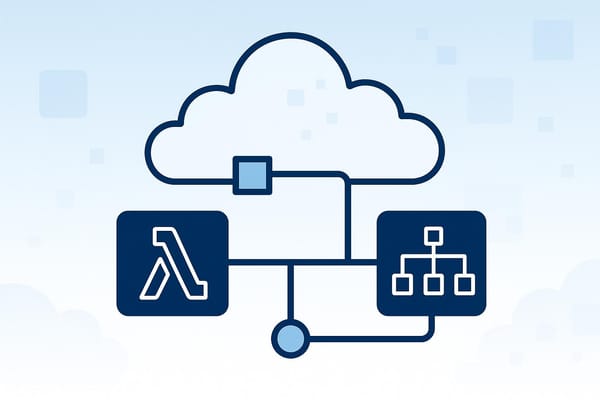Ultimate Guide to AWS Security Hub for SMBs
Learn how AWS Security Hub empowers SMBs by simplifying security management, automating compliance checks, and integrating with existing tools.
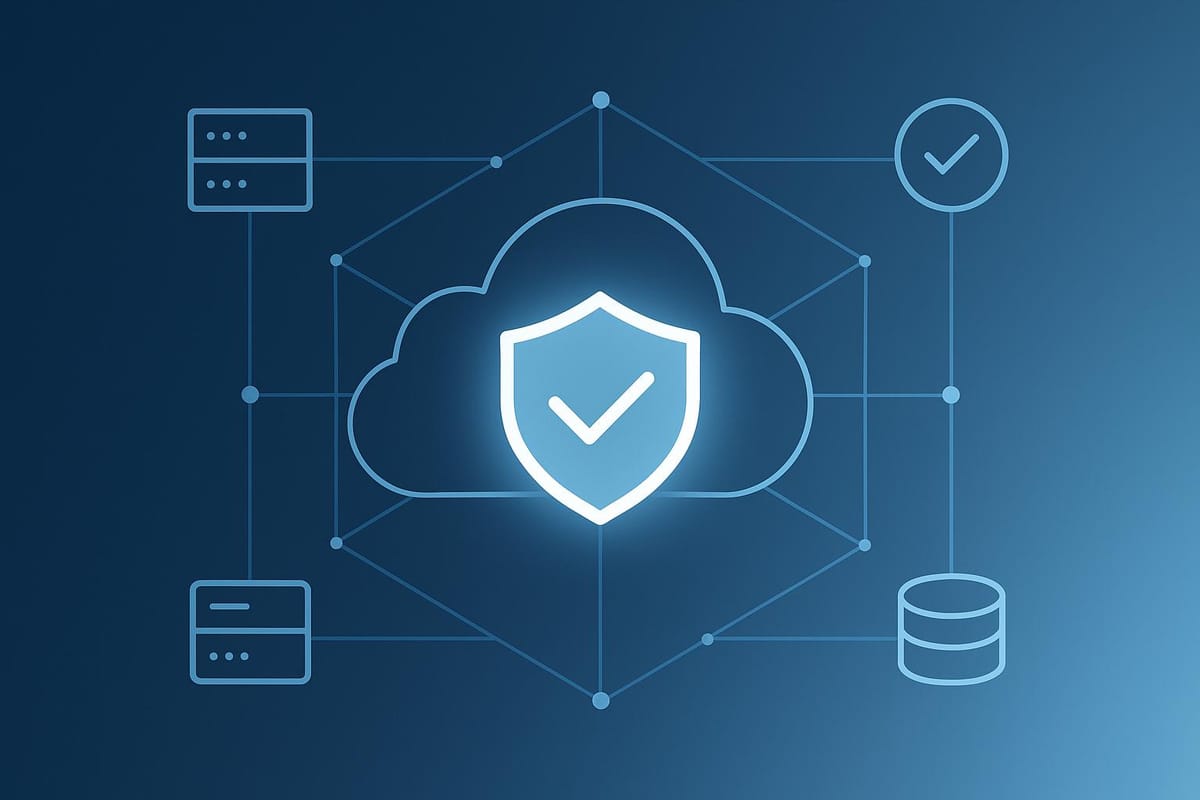
AWS Security Hub simplifies cloud security management for small and medium-sized businesses (SMBs) by consolidating security alerts into one dashboard. It automates security checks, prioritises risks, and integrates with other tools, helping businesses without dedicated security teams stay protected. Here's why it matters:
- 43% of data breaches involve SMBs, and 83% struggle to recover financially.
- AWS Security Hub provides continuous monitoring, highlighting critical issues and reducing manual effort.
- Its integration with AWS tools like GuardDuty, Inspector, and Macie, plus third-party tools like Jira and Slack, streamlines security operations.
- Costs are manageable, starting at £0.0008 per check, with tips to avoid overspending.
Key Features:
- Centralised security alerts.
- Automation of threat detection and compliance checks.
- Easy integration with other tools.
- Support for compliance standards like PCI-DSS and GDPR.
Setup Tips:
- Activate AWS Config in all regions.
- Use AWS Organisations for multi-account setups.
- Leverage automation for faster responses.
AWS Security Hub is a practical way for SMBs to strengthen their security posture, reduce risks, and save time without needing a large security team.
Security Superfriends Episode 2: Ely Kahn, Product Management, AWS
Setting Up and Configuring AWS Security Hub
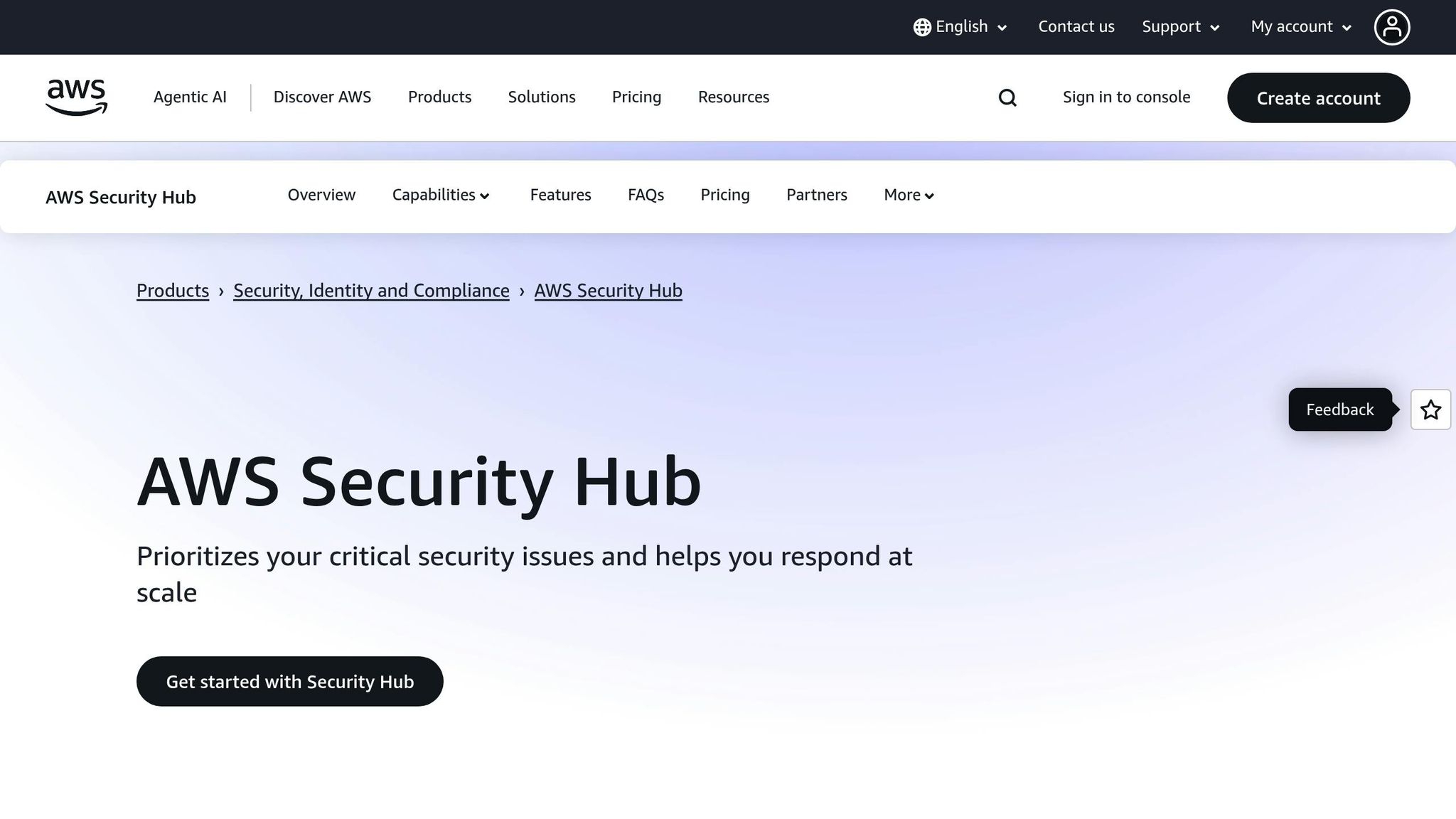
Getting started with AWS Security Hub doesn't have to be complicated. With the right preparation, small and medium-sized businesses (SMBs) can establish strong security measures without unnecessary hassle.
Prerequisites for Setup
Before enabling AWS Security Hub, there are a few key prerequisites to address. The most important is ensuring AWS Config is activated in every region where you plan to use Security Hub. This is because Security Hub relies on AWS Config for its security checks and compliance monitoring.
You'll also need the correct permissions. AWS suggests attaching the AWSSecurityHubFullAccess managed policy to your IAM identity to unlock Security Hub's cloud security posture management (CSPM) features. If you're managing multiple AWS accounts through AWS Organizations, it's a good idea to attach the AWSSecurityHubOrganizationsAccess policy as well.
Additionally, make sure that resource recording is turned on in AWS Config before enabling any Security Hub standards or controls. For multi-account setups, integrating with AWS Organizations is highly recommended. This ensures centralised management and simplifies security operations across all accounts.
Once these prerequisites are in place, you're ready to move on to configuring Security Hub.
Step-by-Step Configuration Guide
The configuration process varies slightly depending on whether you're setting up Security Hub for a single account or managing multiple accounts. Here's a general overview:
For single-account setups, begin by enabling Security Hub through the AWS Management Console. Navigate to the Security Hub service, select your primary region, and click "Enable Security Hub." Once activated, the service will start its initial assessment of your environment.
For multi-account setups, use AWS Organizations to link your accounts. Designate a delegated administrator account to oversee security settings across your organisation.
After enabling Security Hub, activate security standards such as the AWS Foundational Security Best Practices and the CIS AWS Foundations Benchmark. These standards automate security checks, which can be especially helpful for businesses without dedicated security teams.
If your operations span multiple regions, consider setting up cross-region aggregation. This lets you designate one region as the primary aggregation point for findings from other regions. For UK-based businesses, this could mean using the EU (London) region alongside other AWS regions.
Finally, integrate Security Hub with your existing tools. It works seamlessly with AWS services like GuardDuty, Inspector, and Macie. You can also connect selected third-party security solutions, though it's worth noting that each additional integration may impact your monthly costs.
Managing Costs During Setup
For SMBs, managing costs during the setup process is essential. AWS Security Hub pricing starts at about £0.0008 per security check for the first 100,000 checks each month. To avoid overspending, careful configuration is key.
Since Security Hub depends on AWS Config, this can be a significant cost driver. If you're using the AWS Config configuration recorder solely for Security Hub, consider disabling it once your setup is complete to save money.
Cloud waste is a common issue - around 28% of cloud spending is wasted. To avoid unnecessary costs, only enable Security Hub in regions where you have active workloads. Start with the most critical security standards, and expand as your security needs grow.
Use tools like AWS Cost Explorer and AWS Budgets to keep an eye on your expenses during the setup phase. Setting up billing alerts can help you catch any unexpected cost increases. Additionally, take advantage of Security Hub's 30-day free trial to get a clear understanding of your ongoing costs.
Another way to save is by regularly reviewing and deleting resolved findings. Security Hub allows you to automate the suppression, updating, or deletion of findings once they've been addressed, helping you avoid storage costs for obsolete data.
Start small and scale up gradually. Enable Security Hub in your primary region first, get familiar with its features and costs, and then expand to additional regions and standards as needed. This measured approach will help you keep expenses under control while building a strong security framework for your business.
Integrating AWS Security Hub with Other Security Tools
After setting up AWS Security Hub, the next logical step is connecting it with other security tools. This integration allows small and medium-sized businesses (SMBs) to centralise their security findings and gain better visibility into potential threats - all without juggling multiple dashboards. The result? A streamlined and unified security setup that complements your earlier configuration efforts.
AWS Network Firewall Integration
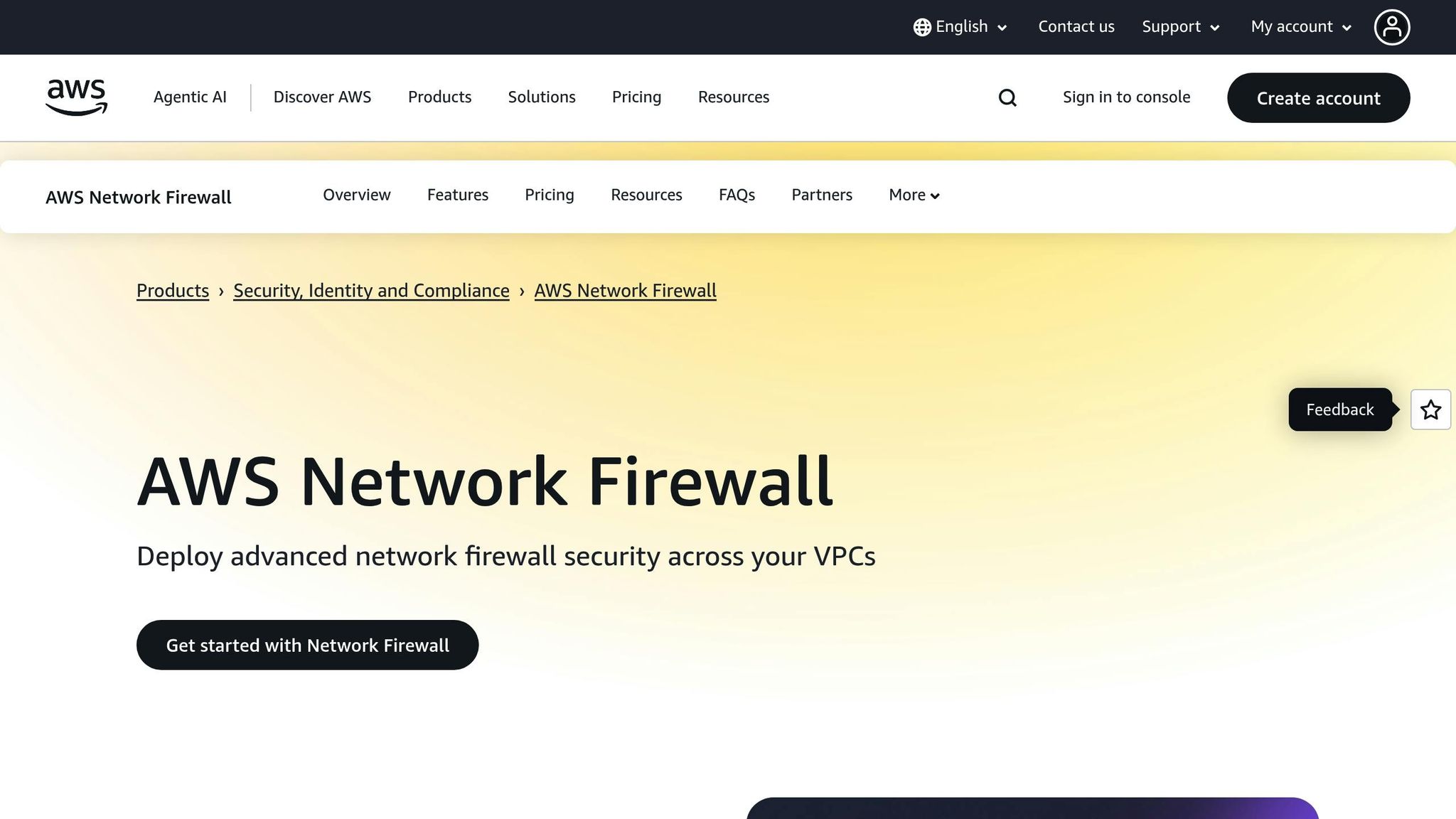
AWS Network Firewall works hand-in-hand with Security Hub via Firewall Manager, automatically sending non-compliance and attack findings to Security Hub. To optimise this pairing, ensure you:
- Enable logging for detailed insights.
- Deploy firewalls across multiple Availability Zones for redundancy.
- Assign a rule group to each Network Firewall policy to filter packets efficiently.
- Activate protections for deletion and subnet changes.
For better visibility, you can filter AWS Firewall Manager findings in Security Hub. Set the filter attribute to "Product Name", the operator to "EQUALS", and the value to Firewall Manager. Additionally, Security Hub converts AWS Config rule evaluations into findings that align with the AWS Security Finding Format (ASFF), making data aggregation consistent and easier to manage.
Using GuardDuty with Security Hub
Amazon GuardDuty integrates effortlessly with Security Hub, providing automated threat detection without requiring deep security expertise. To get started, enable both GuardDuty and Security Hub in the same account and region. GuardDuty findings are sent to Security Hub in the AWS Security Finding Format (ASFF), typically within five minutes. If Security Hub becomes temporarily unavailable, GuardDuty keeps retrying until the findings are successfully delivered, ensuring no gaps in protection.
Security Hub also offers dedicated controls for GuardDuty resources, helping you consolidate findings and strengthen your overall threat detection capabilities. This native integration not only simplifies threat monitoring but also enhances your proactive security measures when used alongside other AWS services.
Third-Party Security Tool Integration
Security Hub can also connect with third-party tools, exchanging findings in the AWS Security Finding Format (ASFF) for seamless processing. Here’s a quick look at some popular integrations:
| Integration | Direction | Key Benefits |
|---|---|---|
| Atlassian – Jira Service Management | Receive and update | Automatically creates issues from findings and keeps them synchronised with Jira |
| ServiceNow – ITSM | Receive and update | Generates incidents automatically with two-way updates |
| PagerDuty | Receive | Streamlines threat response with custom actions |
| Slack | Receive | Consolidates security alerts into team communication channels |
To get the most out of these integrations, use Security Hub's automation rules to simplify workflows. For example, you can automatically update or suppress findings based on factors like severity or resource tags. When using ticketing systems like Jira or ServiceNow, configure them to auto-generate incidents for incoming findings, ensuring your team can respond swiftly. For findings that represent accepted business risks, opt for Security Hub's suppression feature instead of disabling controls entirely.
Lastly, consider creating distinct configuration policies for different account types - such as management accounts versus application accounts. This allows you to tailor security responses to meet the specific needs of each account type effectively.
Best Practices for SMBs Using AWS Security Hub
Strengthen your small or medium-sized business's security setup with these practical tips for managing AWS Security Hub. These strategies will help you maintain robust security while keeping costs and resources under control.
Regular Security Posture Reviews
Conduct regular reviews of your security posture to stay ahead of potential threats. These reviews help identify patterns and systemic issues, allowing you to address them before they become bigger problems.
Start by checking your Security Hub dashboard for an overall view of your security status. Pay close attention to findings that appear across multiple resources, as they often indicate broader issues. Keep track of remediation progress - spreadsheets work well for smaller setups, while larger environments might benefit from Security Hub's native filtering tools. When prioritising findings, focus on business impact rather than severity scores. For example, a medium-severity issue affecting a customer-facing application could require faster action than a high-severity issue on a development server.
To further streamline your security efforts, consider setting up automated responses.
Automating Security Responses
Automation can significantly reduce manual work and improve your team's ability to focus on critical threats. AWS Security Hub offers Automation Rules that allow you to update or suppress findings in near-real time.
Using Amazon EventBridge, you can create custom workflows for rapid responses. This integration enables Security Orchestration, Automation, and Response (SOAR) workflows, which can automatically address specific findings. For instance, you could configure EventBridge to isolate an EC2 instance immediately if GuardDuty detects suspicious network activity.
AWS also provides the "Automated Security Response on AWS" solution, which includes predefined remediation actions aligned with industry compliance standards.
"By automating the remediation of your Security Hub findings, you can maintain a strong security posture with reduced manual effort, aligning with industry best practices and compliance standards while streamlining your overall security management process."
Enhance your automation by integrating Security Hub with ticketing systems like Jira Service Management or ServiceNow. These integrations allow findings to generate tickets automatically, ensuring two-way synchronisation with your current workflows. Start with simple automations, such as suppressing findings for resources tagged as "development" or "testing", and gradually implement more complex workflows.
One example of automation success comes from Weetrust, an SMB that saved over 20 hours each month by combining Security Hub with Amazon GuardDuty and Amazon Inspector. This allowed their team to focus on improving customer experience instead of manual security tasks.
Compliance Monitoring and Reporting
Continuous compliance monitoring is essential for reinforcing your security framework. AWS Security Hub simplifies this process by evaluating your resources against established standards such as PCI-DSS, HIPAA/HITECH, and GDPR.
Enable the standards that are most relevant to your business needs, and consider adding frameworks like CIS or NIST if applicable. Each finding comes with detailed remediation guidance, making it easier for your team - even those without deep security expertise - to address compliance gaps.
For ongoing compliance checks, use AWS Audit Manager alongside Security Hub. This combination ensures thorough monitoring without requiring a dedicated compliance team. AWS manages the infrastructure's security, while you are responsible for securing your configurations.
If your SMB operates in a regulated industry, consider adopting the Three Lines Model for compliance governance. This model separates operational management, risk oversight, and independent assurance functions, creating a structured approach to compliance.
A real-world example is Authority Brands, which uses AWS Control Tower and AWS Identity and Access Management to manage a secure multi-account environment. This setup supports their machine learning-powered analytics solution while ensuring compliance.
Finally, document your compliance processes thoroughly. Maintain evidence of remediation activities, including screenshots and change logs, to simplify audits and security assessments. Security Hub's built-in audit trail can serve as a solid foundation for this documentation, but additional records may prove invaluable during compliance reviews.
Key Takeaways for SMBs
AWS Security Hub simplifies security management by consolidating it into a single dashboard - a crucial feature for small and medium-sized businesses (SMBs), especially when 83% are financially unprepared for cyber incidents and 43% lack a cybersecurity plan. Instead of juggling scattered alerts across multiple tools, Security Hub provides a unified view of your security status across all AWS accounts and services. This streamlined approach not only makes security management easier but also sets the stage for automation and better cost management.
One of the standout features of Security Hub is its automation capabilities, which significantly lighten the load for SMBs. The platform automatically conducts security checks based on industry standards, cutting down on manual compliance work and enabling automated responses to potential threats. For instance, Intuit saw an 80% reduction in remediation time thanks to these automation tools.
Cost efficiency is another major benefit. By reducing operational overhead and minimising security risks, AWS users report 43.4% fewer security incidents and 69% less unplanned downtime. For SMBs like Weetrust, this translates to saving over 20 hours each month.
When it comes to compliance, Security Hub excels by automatically evaluating your environment against essential frameworks like PCI-DSS, HIPAA/HITECH, and GDPR. It generates security scores that make audit preparation far less daunting - an invaluable feature for SMBs that may lack dedicated compliance teams.
Additionally, Security Hub’s integration capabilities enhance its value. It works seamlessly with existing AWS services and third-party tools, allowing businesses to strengthen their security posture without overhauling their current systems. ITV, for example, has successfully leveraged this integration. Tom Johnson, Head of Security Operations at ITV, shared:
"AWS Security Hub has improved how we manage security across our cloud infrastructure at ITV. The centralised visibility helps us understand our security posture across multiple environments, which is essential for our media operations. Having a single security solution to monitor and manage security enables our team to work more efficiently and maintain consistent security controls across our organisation."
In a world where over half of SMBs experience security breaches, with a third happening in the last 12 months, AWS Security Hub delivers enterprise-level security without the complexity or high costs often associated with such solutions.
For more tips on optimising your AWS environment, including cost management and best practices, check out AWS Optimization Tips, Costs & Best Practices for Small and Medium sized business. This resource is tailored to help SMBs navigate AWS implementation and management effectively.
FAQs
How does AWS Security Hub support SMBs in meeting compliance requirements like PCI-DSS and GDPR?
How AWS Security Hub Helps SMBs with Compliance
AWS Security Hub is a game-changer for small and medium-sized businesses (SMBs) looking to meet compliance standards like PCI-DSS and GDPR. By automating security checks and offering continuous monitoring, it takes the complexity out of compliance management.
For PCI-DSS, AWS Security Hub uses automated controls to ensure businesses are handling payment data securely. This means you can verify compliance with security requirements without manually checking every detail.
When it comes to GDPR, AWS Security Hub helps businesses securely process and store personal data within AWS services. This ensures sensitive information is protected while meeting legal requirements.
By simplifying compliance and offering actionable insights, SMBs can concentrate on growing their business without compromising on security or compliance.
How can SMBs manage costs effectively when using AWS Security Hub?
Managing Costs with AWS Security Hub
For small and medium-sized businesses (SMBs), keeping AWS Security Hub costs in check starts with prioritising only the security controls that align with your specific needs. Since costs are tied to the number of resources and controls being monitored, it's a good idea to regularly review your setup and turn off any controls that aren’t essential. This simple step can help avoid unnecessary expenses.
Another smart move is to take advantage of AWS’s native tools like Trusted Advisor. This tool can help you identify underused resources, such as idle instances or oversized services. By scaling these down or shutting them off entirely, you can significantly cut costs. Similarly, consolidating network resources and fine-tuning content delivery processes can help you save money without compromising on security or compliance.
If you're looking to take your cost management further, you might want to dive into expert resources on AWS cost management. These can offer tailored advice and best practices to help SMBs make the most of their AWS investments.
How can I integrate AWS Security Hub with tools like Jira and Slack to improve security operations?
Integrating AWS Security Hub with Jira and Slack
AWS Security Hub works seamlessly with tools like Jira and Slack to simplify security operations and boost team collaboration.
With Jira, you can automate the creation and updating of tickets based on Security Hub findings. This ensures that security incidents are tracked and managed efficiently, helping teams address issues in a timely and organised manner.
For Slack, Security Hub findings can be sent directly to designated channels, providing real-time alerts to your team. By setting up tailored workflows or automated actions, teams can respond to potential threats faster, improving response times and coordination.
These integrations are especially helpful for small and medium-sized businesses aiming to refine their security processes while keeping operations running smoothly.
